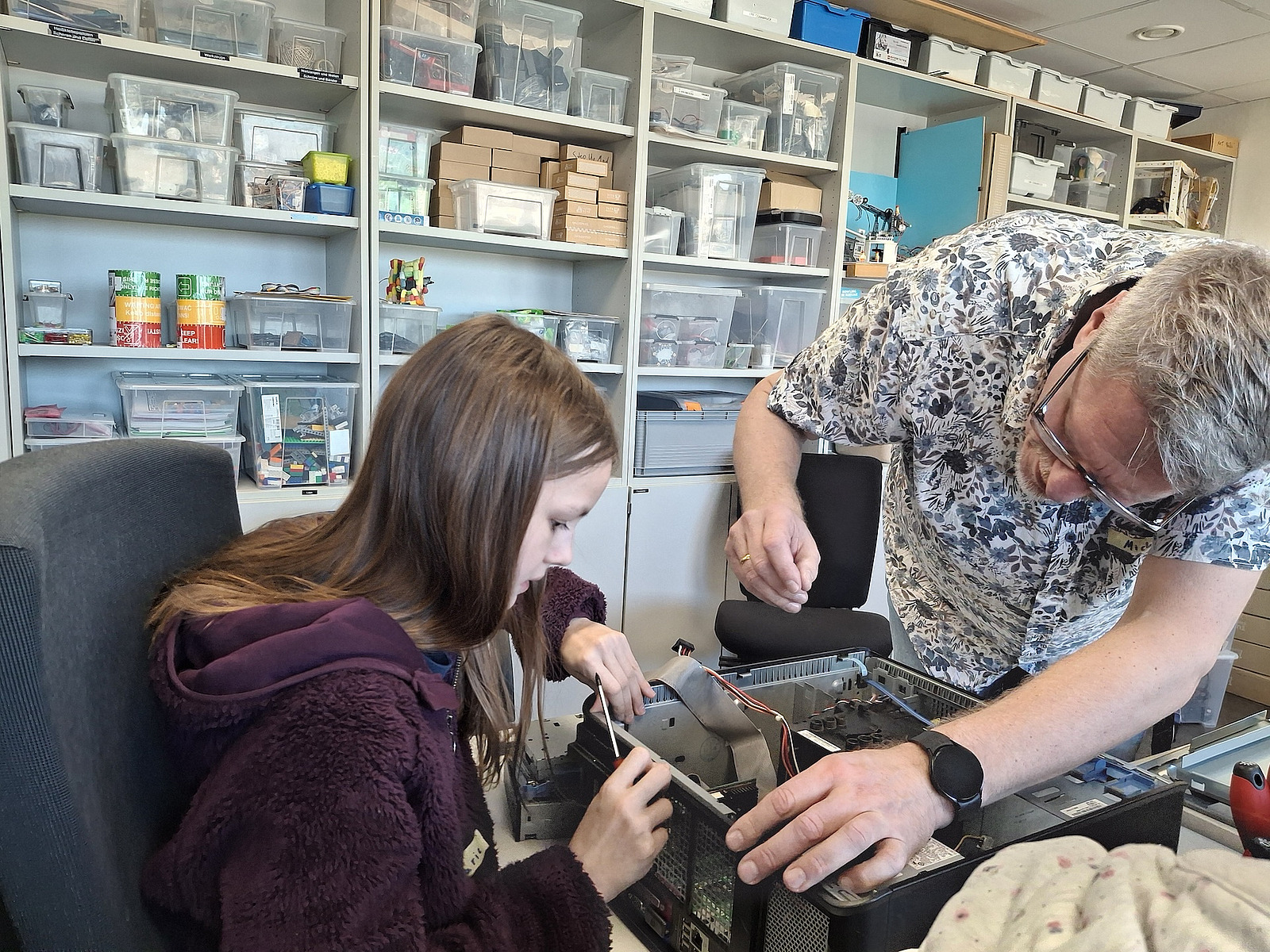If you get too excited, you might need a cookie to calm you down. Pupils from sixth to ninth grade were given an insight into the world of computers. Looking through VR glasses caused a lot of excitement.
In different groups, the students got to know the Institute of Computer Science at the university. The younger students from years six and seven were first allowed to disassemble computers with Prof. Michael Brinkmeier from "Didactics" to see how they work. When the parts were all in front of them at the end, they were gripped by ambition. "We're going to put them back together again," said Viktoria, Mareike and Marie. "That wasn't the original plan," says Prof. Michael Brinkmeier, but it was then put into practice. No parts were left over. After everyone had seen the inside of the computers, he explained the first steps of programming to the students. Using the abozza!Worlds program, they were able to make an elephant solve various tasks. But they were not satisfied with mediocre solutions. One star was not enough, it had to be three stars. The tasks became increasingly complex at higher levels. Finally, the students were allowed to take a tour of the Virtual Museum. Using VR glasses, they were able to see pictures, statues and historical buildings in Osnabrück. "Bring back a souvenir for me!" said Marie to Viktoria as she walked through the rooms. The unfamiliar tour was very exciting and required a few cookies at the end to calm her down.
Meanwhile, Layla from year nine was allowed to program a driving simulator in Prof. Olaf Spinczyk's "Embedded Software Systems" working group. She already had some experience from the robotics club at her school and was able to work on more complex solutions. How do you program a speed limit and how does the car react to it in the driving simulator? A microcontroller provides the interface between the driving simulator and the car hardware. Student Julius Spiegelhalter explained the connections to her and together they looked for programming options.
In Prof. Mario Porrmann's "Computer Engineering" working group, Layla was then able to get to know mini-robots and develop a program that enables the mini-robot to recognize objects of a certain color. Research assistant Philipp Gehricke explained the basic concepts of robotics and image processing to her. "First, the camera images are retrieved. This is followed by comprehensive image processing, which includes cropping, applying filters and recognizing object contours. Finally, clever logic controls the robot so that it follows the recognized objects in a targeted manner."
All the students gave positive feedback at the end. Not only did they have a lot of fun, they also learned a lot.

